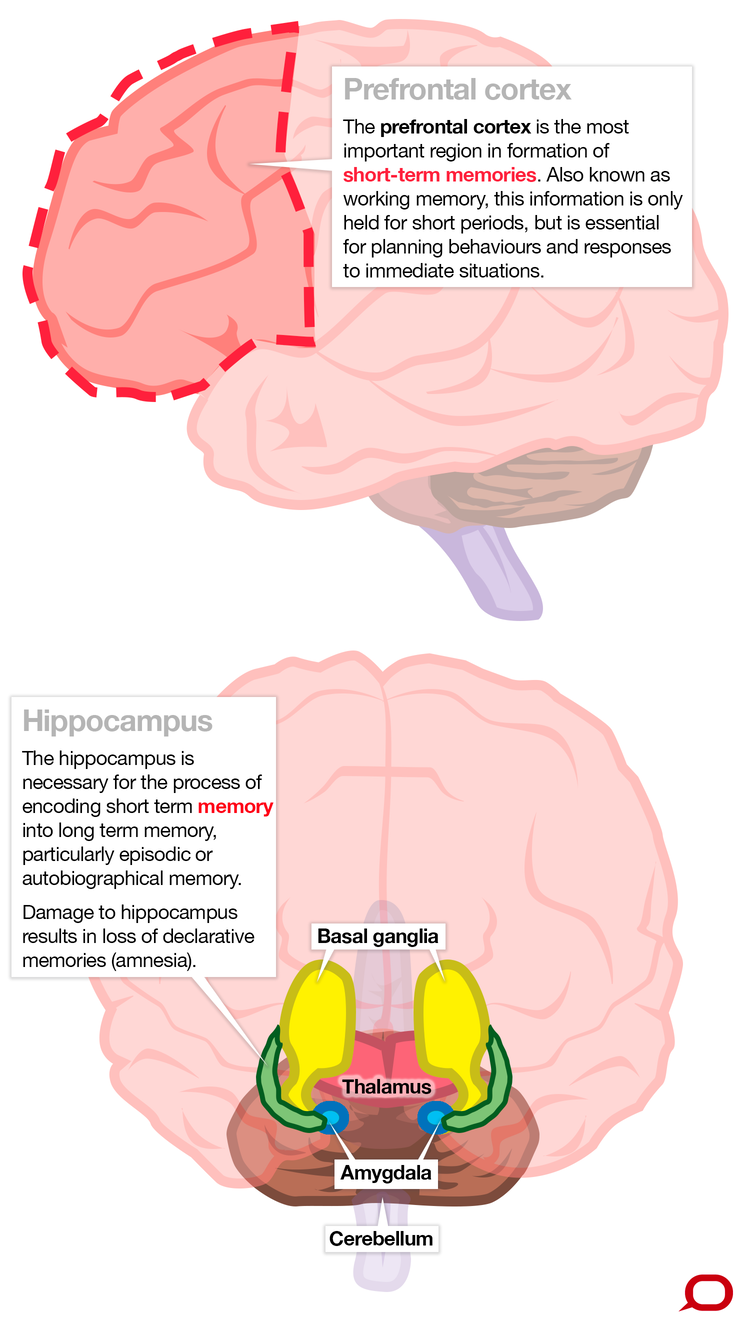All our different types of memories
Our memories are important: they make us who we are and allow us to actively participate in the world around us. Memory is also incredibly complex, involving many regions and systems within the brain to process and remember different types of information. The memory you have for how to tie a shoelace, for example, involves different regions of the brain compared to the memory of how you spent your birthday last year.

Broadly speaking, we can categorise different types of memories based on how the information is stored (procedural or declarative memory) or based on how it is remembered and expressed in our behaviour (implicit or explicit memory).
Procedural vs declarative memory
Procedural memory refers to our knowledge of skills and how to perform tasks, and is something we mostly remember automatically. We generally don’t need to consciously think about how to ride a bike or play an instrument: we simply go through the motions once we’ve learned how to do it.
Multiple parts of the brain are involved in the formation of procedural memories. Once a skill has been learned, a key part of the brain called the basal ganglia is responsible for processing and coordinating the muscle movements and habitual actions required to achieve a goal.
Imagine there’s a ball zooming towards your head: do you raise your hands to catch it, or do you run away from it to avoid being hit? Quickly deciding which action to take is a decision for the basal ganglia. The cerebellum, located towards the back of the brain, is also responsible for coordinating those movements.

Declarative memories are facts or memories of past events that can be ‘declared’ rather than performed. Examples might include an important life event, who came to dinner last night, or the date of your mother’s birthday, as well as information about the world. Declarative memories can be further broken down into other sub-types of memories:
- semantic (also called ‘generic’) memories: memories of general knowledge (such as the countries in Africa or what a dog looks like)
- episodic memories: memories of life events that happened to you or around you, often replayed as short episodes or snapshots
- autobiographical memories are typically combinations of semantic and episodic memories that contribute to your sense of self—your own life history and identity.
- spatial memories, such as remembering the route to drive home, or where a certain shop is located.
Two key areas of the brain involved in forming and storing declarative memories are the prefrontal cortex and the hippocampus. The prefrontal cortex, located at the very front of the brain, is responsible for our working memory: processing new incoming information and manipulating any existing memories that we might be consciously thinking about at any given time (such as reliving a memory of a past event, for example).

If the information is deemed important enough to be consolidated forever into our long-term memory, that’s when the hippocampus comes into play. This is a seahorse-shaped structure that sits more or less in the middle part of the brain (the medial temporal lobes, to be precise) and is directly involved in storing away important info in other regions of our cerebral cortex (the outer layer of grey matter that makes up a large part of our brain).
Memories are not stored as perfect records, though. Retrieval of episodic and autobiographical memories is highly reconstructive: extra bits of information that weren’t there when the memory was originally ‘laid down’ can get added in during the process of remembering. It’s not always possible to tell which features are part of the original memory and what information has been introduced later (something that makes accurate eyewitness testimony very difficult).
Implicit vs explicit memory
If procedural and declarative memories are the what of memory, implicit and explicit memories are the how. Implicit memories are those that we remember unconsciously and are expressed in our behaviour in some way. Most of our procedural memories fall into this category.
Conditioned learning and associative memory are also examples of how implicit memory works. We can see the evidence of these unconscious associations in experiments on priming effects, where exposing someone to a stimulus affects how new information is processed or how tasks are performed. For example, if someone reads a list of words including ‘cooking’, ‘food’ and ‘hot’ before being asked to complete a four-letter word starting with ‘SO__’, they are more likely to say ‘SOUP’. Someone ‘primed’ with words such as ‘bath’, ‘clean’ and ‘bubbles’ may be more likely to respond with ‘SOAP’ instead.
Explicit memories, on the other hand, are those that are consciously remembered. Memories can be recalled, where they are spontaneously retrieved from long-term memory storage, such as when you reminisce about your last travel adventure overseas. Recognition, which requires less effort compared to recall, refers to the sense that you’ve previously encountered or learned something that you are perceiving in a given moment—that feeling you get when something ‘rings a bell’.

We might like to think that our memories are safe and secure but, in reality, there are many things that can affect our ability to create, store and retrieve them. Mapping out which systems in the brain are responsible for forming and maintaining our memories is essential for preventing memory malfunctions—and finding better ways to enhance and improve our ability to remember.





